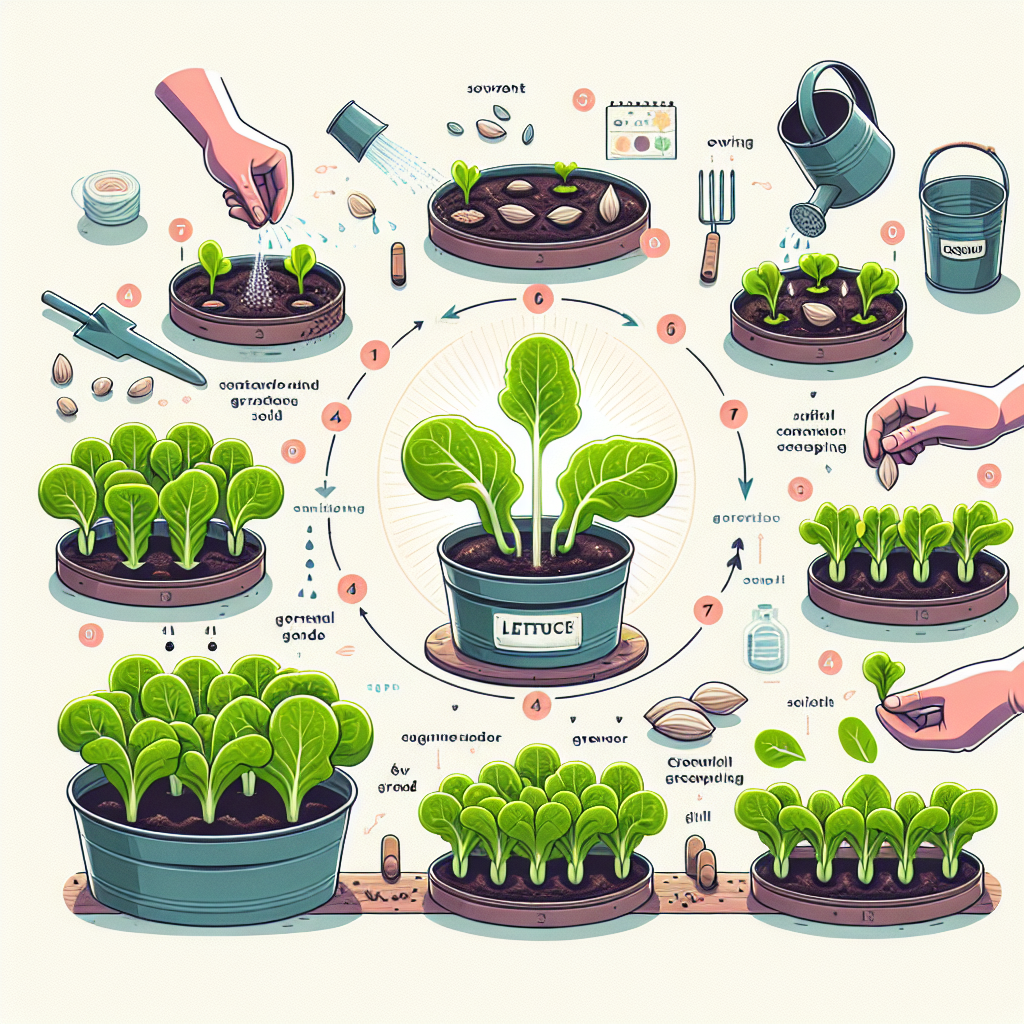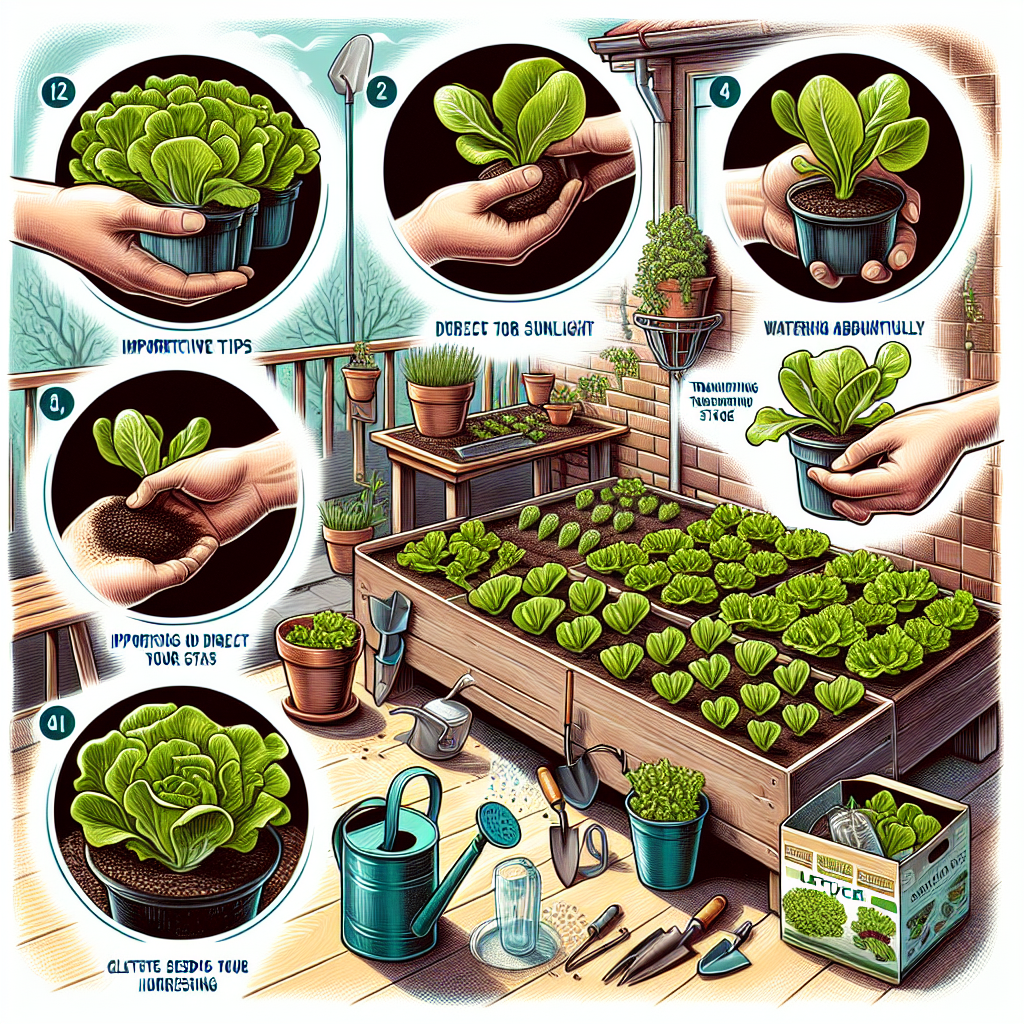Growing Lettuce at Home: A Beginner’s Guide
Lettuce is a versatile and nutritious leafy vegetable that can be grown easily in your own backyard. Whether you have a spacious garden or a small balcony, growing lettuce at home is an enjoyable and rewarding experience. In this beginner’s guide, we will walk you through the various steps involved in successfully growing lettuce.
1. Choosing the Right Variety:
Lettuce comes in many different varieties, each with its own unique flavor, texture, and growth habits. As a beginner, it is advisable to start with leaf lettuce varieties such as Buttercrunch or Red Salad Bowl, which are easy to grow and quick to mature. These varieties also come in loose-leaf forms, making them ideal for harvesting individual leaves instead of uprooting the whole plant.
2. Preparing the Soil:
Lettuce thrives in rich, well-draining soil that is slightly acidic (pH 6-6.5). Before planting, prepare the soil by removing any weeds and loosening it with a garden fork or tiller. Add organic matter like compost or well-rotted manure to improve soil fertility and drainage.
3. Starting from Seeds:
Lettuce can be started from seeds indoors or directly sown into the ground. If starting indoors, sow the seeds in seed trays filled with potting mix about 4-6 weeks before the last expected frost date. Keep them moist and provide adequate sunlight until they develop true leaves.
4. Transplanting Seedlings:
Once your seedlings have grown to about 2-3 inches tall (usually after a month), they are ready for transplanting into their final location outdoors. Ensure that all danger of frost has passed before moving them outside. Space the seedlings 6-12 inches apart to allow sufficient room for growth.
5. Providing Optimal Growing Conditions:
Lettuce prefers cool weather and moderate sunlight. Find a spot in your garden that receives 4-6 hours of direct sunlight daily. If you live in a hot climate, consider providing some shade during the hottest parts of the day to prevent the lettuce from wilting or bolting (going to flower and producing seeds prematurely).

6. Watering and Mulching:
Lettuce has shallow roots, so it requires regular watering to keep the soil consistently moist but not waterlogged. Water deeply whenever the top inch of soil feels dry, ensuring that the water reaches down to the roots. Mulching around the plants with straw or wood chips helps retain moisture and suppresses weed growth.
7. Fertilizing:
To promote healthy growth, apply a balanced organic fertilizer every 3-4 weeks or use slow-release granules at planting time. Avoid using high-nitrogen fertilizers, as they can result in lush foliage but bitter-tasting lettuce leaves.
8. Harvesting Lettuce:
Leaf lettuce can be harvested at any stage depending on your preference. For baby lettuce, harvest individual outer leaves as soon as they are large enough to use (around 3-4 weeks after transplanting). For mature heads, wait until they have formed tight rosettes before cutting them off at ground level.
9. Dealing with Pests and Diseases:
Lettuce is relatively easy to grow, but it can still be affected by certain pests such as aphids, slugs, and snails. Regularly inspect your plants for any signs of damage or infestation, and promptly take action by using organic pest control methods like insecticidal soap or diatomaceous earth.
10. Succession Planting:
To ensure a continuous harvest throughout the growing season, consider practicing succession planting. This involves sowing small batches of lettuce seeds every two weeks so that you have a constant supply of fresh leaves.
Growing lettuce at home is not only a great way to enjoy fresh, pesticide-free greens but also a wonderful way to connect with nature and experience the satisfaction of growing your own food. With the tips provided in this beginner’s guide, you are well on your way to becoming a successful lettuce gardener. So grab your gardening tools, and get started on this exciting journey!













